Laws of Exponents
There are several different "laws" or properties when working with exponents:
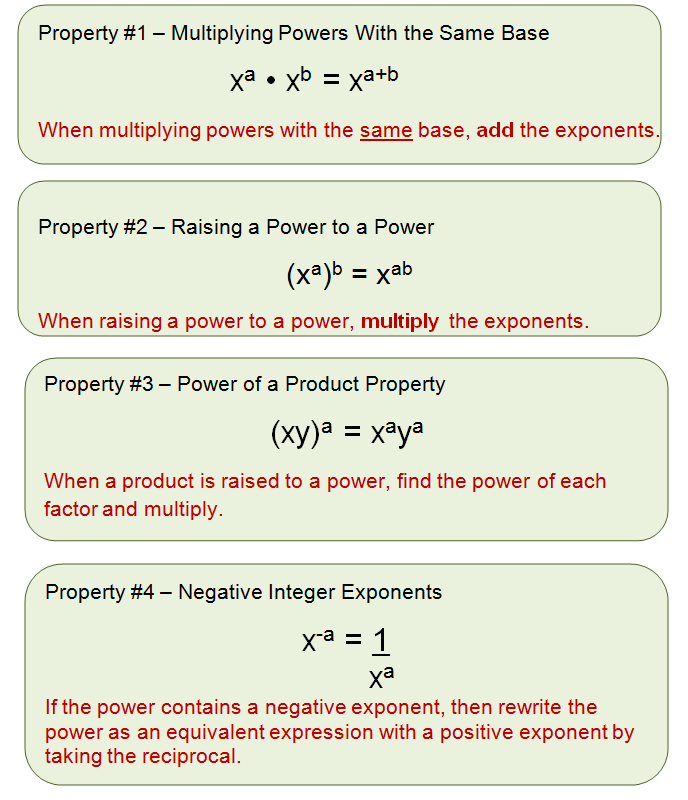
Next we'll look at a few formulas that can be used when working with polynomials.
Polynomial Formulas
There are special rules or formulas that can be used when multiplying polynomials or factoring polynomials. Let's take a look:
Multiplying Polynomials Using FOIL
To multiply two polynomials, multiply each term in the first polynomial by each term in the second polynomial. This is also known as using FOIL.
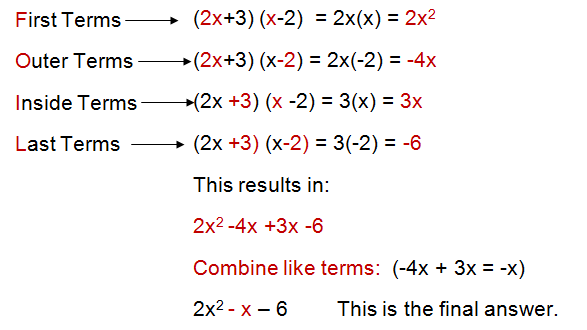
Square of a Binomial
To square a binomial, you add: the square of the first term, twice the product of the two terms, and the square of the last term. Take a look:
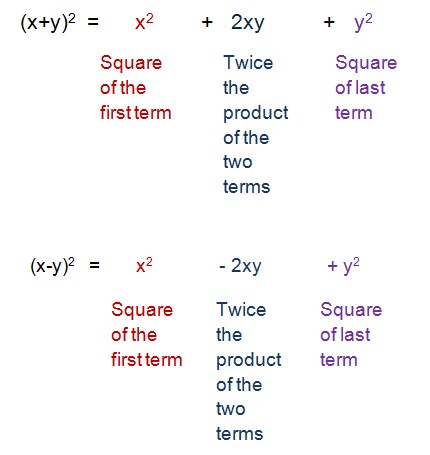
Difference of Two Squares
When two binomials differ only by the sign between their terms (one a plus, the other a minus), we call this a Difference of Two Squares.
The rule is very easy to remember: Subtract the square of the second term from the square of the first term. Take a look:

Polynomials - Special Factoring
The following formulas will actually take our special products from above and work backwards to factor. Same rules, we are just working backwords to find the factors.
Perfect Square Trinomial
A perfect square trinomial results in binomial squares.
If you notice that the first and last terms are perfect squares, then check to see if the trinomial factors as a binomial square.
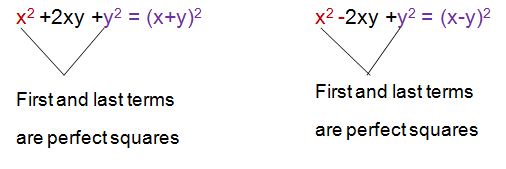
Difference of Two Squares

The Sum and Difference of Two Cubes
The following are the formulas for factoring the sum and difference of two cubes:
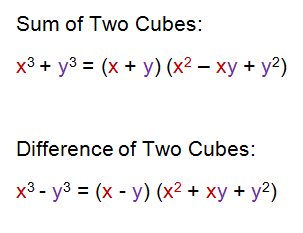
Quadratic Formula
There are two formulas that are associated with quadratic equations: the vertex formula and the quadratic formula.
Vertex Formula
The vertex formula is used when you must find the vertex (minimum or maximum point) of the parabola.

Quadratic Formula
You can use the quadratic formula to solve ANY quadratic equation. It is used most when the quadratic equation is non-factorable.
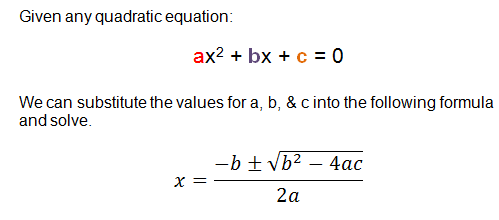
Our last basic algebra formula is the Pythagorean Theorem.
Pythagorean Theorem
The Pythagorean Theorem is used to identify the length of the sides of any right triangle.
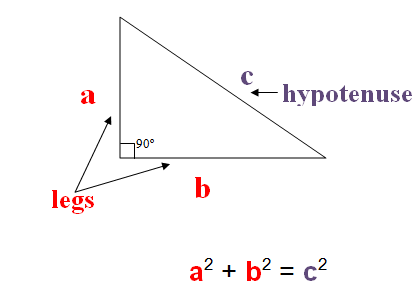
Saturday, August 13, 2011
Maths-Algebra #2
Subscribe to:
Post Comments (Atom)
No comments:
Post a Comment